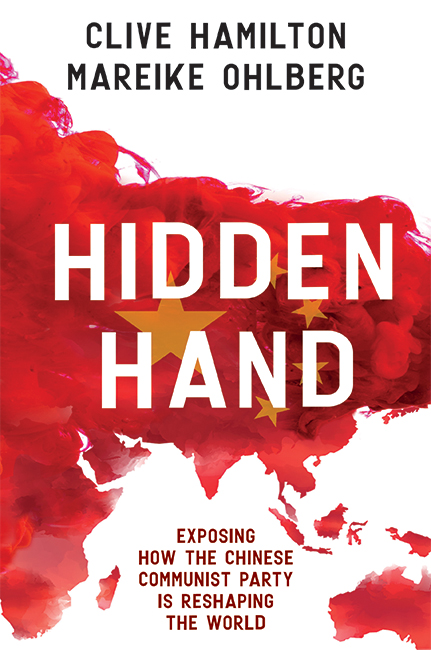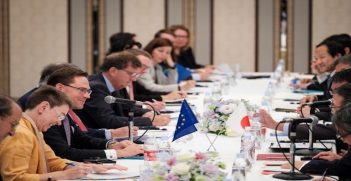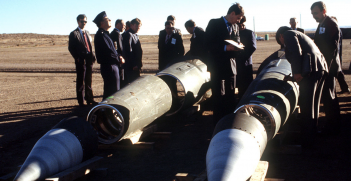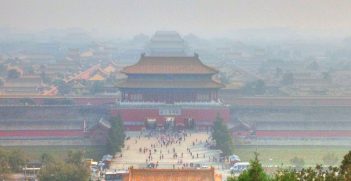Book Review: Hidden Hand

The Chinese Communist Party’s global influence operations are covert but pervasive, and are undermining Western democratic institutions. Hidden Hand is very welcome in raising our awareness of this, and the stakes involved.
Most rising powers endeavour to shape the world order in their favour. Following World War II, the United States did just that as it led the formation of a new rules-based world order, notably through the creation of international organisations like the UN, International Monetary Fund, World Bank, and Organisation for Economic Cooperation and Development. It also forged strategic alliances and partnerships through NATO and with a number of countries such as Japan, South Korea, and Australia. But US actions were motivated by the honourable principles of pluralist democracy, respect for human rights, rule of law, and a market economy, even though its actions could, at times, depart from these principles.
From the 1970s, the US progressively opened up political and economic relations with the People’s Republic of China. As the two economies became intertwined, the US assumed that China’s economic opening would foster political openness and freedom, and that China would become a “responsible stakeholder” in the world order from which its economy was benefiting enormously.
However, as Clive Hamilton and Mareike Ohlberg recount in impressive detail in their new book, Hidden Hand, that was a pious hope that misjudged the true nature of the Chinese Communist Party (CCP). Indeed, while the West was rejoicing the end of the Cold War in Europe and the demise of the USSR, the CCP was studying very carefully the fate of the USSR to ensure that the CCP would not go the same way. The authors argue that for the CCP, the Cold War never ended. Their book documents meticulously how the CCP is reshaping the world order to suit its interests.
This book is a follow-up to Hamilton’s 2018 book, Silent Invasion, which dealt with China’s influence operations in Australia. The new volume thus focuses mainly on China’s influence operations in North America and Western Europe through political elites, the corporate sector, the Chinese diaspora, universities, media, cultural organisation, think tanks, and global governance. I only hope for a third volume that deals with Asia, a region in which many countries are deeply concerned about rivalry between China and the US.
We might read a lot in the press about “wolf warrior diplomacy,” threats, and bullying. But Hamilton and Ohlberg argue that much of the CCP’s influence campaign is actually covert rather than overt, and is often not recognised for what it is. While a variety of tactics are employed, grooming and co-opting Western elites as “friends of China” is a very important one. Hamilton and Ohlberg explain how this tactic gives China “discourse power,” as these elites parrot CCP narratives and bolster international support for the regime. For example, former Australian Prime Minister Paul Keating, who is on the international advisory council of the China Development Bank, once boldly said that the CCP government was “the best government in the world in the last thirty years. Full stop.”
In addition, since China has become a leading trading partner and financial power, it can use this as leverage to coerce partners into submission. Corporate and university leaders, organisations which benefit handsomely from Chinese business, are usually active defenders of the CCP regime. But when you get on the wrong side of China, as Australia did by calling for an independent international enquiry into COVID-19, the economic sanctions can be severe. And as many countries have discovered, when China is displeased it can arrest and take as hostage one or more of their citizens.
The CCP is very keen to break the system of US-centric alliances and to realign those participating countries against the US – the “global enemy.” One of the key goals of China’s Belt and Road Initiative (of which the Australian state of Victoria is a signatory) is to offer an alternative system of alliances, one which increases countries’ loyalty to China, according to the authors. The CCP also exerts great influence over ethnic Chinese people living abroad, such as by threatening to harm their family members still in China, or by getting international students to spy and report on fellow students who might deviate from the CCP line.
While it might be natural for new great powers to exert their influence on the world order, in China’s case it is exploiting the openness of democracies to undermine democracy itself and impose its authoritarian will. In other words, China’s actions represent a threat to human rights and democracy itself.
Why would the seemingly all-powerful China attempt to reshape the world order in such a manner? One answer is that China’s actions are more a reflection of its inherent weaknesses, rather than its strengths, according to Hamilton and Ohlberg. For its legitimacy, the CCP has relied on strong economic growth and nationalism. But President Xi Jinping believes the CCP must do more to ensure its survival, notably by ensuring that the world order supports the CCP and by changing the way that foreign elites think of China. If foreigners start believing that the CCP offers the best governance for China, such international recognition will create a positive feedback loop to China. For example, if Tiananmen Square, Tibet, and the Uyghurs become global taboos, this will stop the infiltration of foreign ideas into China and bolster domestic support for the CCP.
Another reason for Chinese activism to try to reshape the world order in its favour has been Donald Trump’s disdain for the current world order and US allies, which has offered China a strategic opportunity. Brexit and dissension within the EU have had the same effect, write Hamilton and Ohlberg. Notably, China has been able to occupy much strategic terrain through a number of leadership roles in UN organisations. Indeed, if Trump’s US worked more seriously in the UN, the World Health Organisation’s actions during the early stages of COVID-19 may well have been quite different.
What to do?
While the book offers a vast coverage of examples of Chinese influence operations, it has much less to propose in terms of how best to respond. This may be because responding to China’s influence operations is not so easy. Some attitudes of Western elites were formed in the 1980s and 90s, when there was optimism and naivete about political opening in China. Such attitudes may be difficult to change.
And then there are the business and university constituencies which profit handsomely from their relationship with China. But as Hamilton’s previous book, Silent Invasion, demonstrated, academic research, think tanks, and the media can help countries improve their awareness of China’s influence operations. These institutions can be very influential in shaping the public debate and motivating a pushback, such as through legislation on lobbying, campaign financing, and foreign interference. One lesson that Australia is learning from its call for an international enquiry into the origins of COVID-19 is that middle powers are unlikely to be able to confront China alone – they must form alliances with other countries.
Perhaps the greatest lesson about the CCP’s behaviour has been provided from China’s initial cover up, disinformation campaign, cynical mask diplomacy, and wolf-warrior diplomacy during the COVID-19 pandemic. The attitude of Western countries towards China’s influence operations may now be hardened by a loss of trust in China’s governance.
Overall, Hidden Hand is a very impressive compendium of Chinese influence operations in North America and Western Europe, which enriches our understanding of this critically important issue.
This is a review of Clive Hamilton and Mareike Ohlberg, Hidden Hand: Exposing How the Chinese Communist Party is Reshaping the World (Hardie Grant, 2020) ISBN 978 1 74379 557 6. The eBook version is priced from $12 from Google Play, ebooks.com, and other eBook vendors, while in print the book can be ordered from the publisher.
John West is adjunct professor at Tokyo’s Sophia University and executive director of the Asian Century Institute. His recent book “Asian Century … on a Knife-Edge” was reviewed in Australian Outlook.
This article is published under a Creative Commons Licence and may be republished with attribution.





